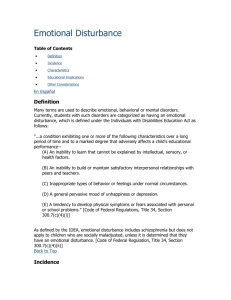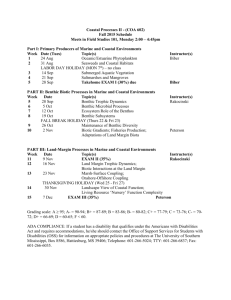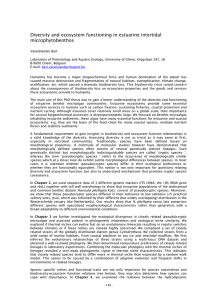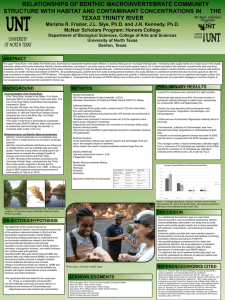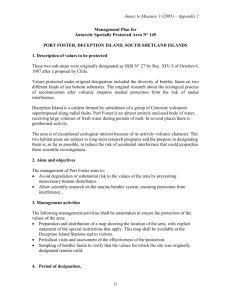Kenneth Fortino
advertisement
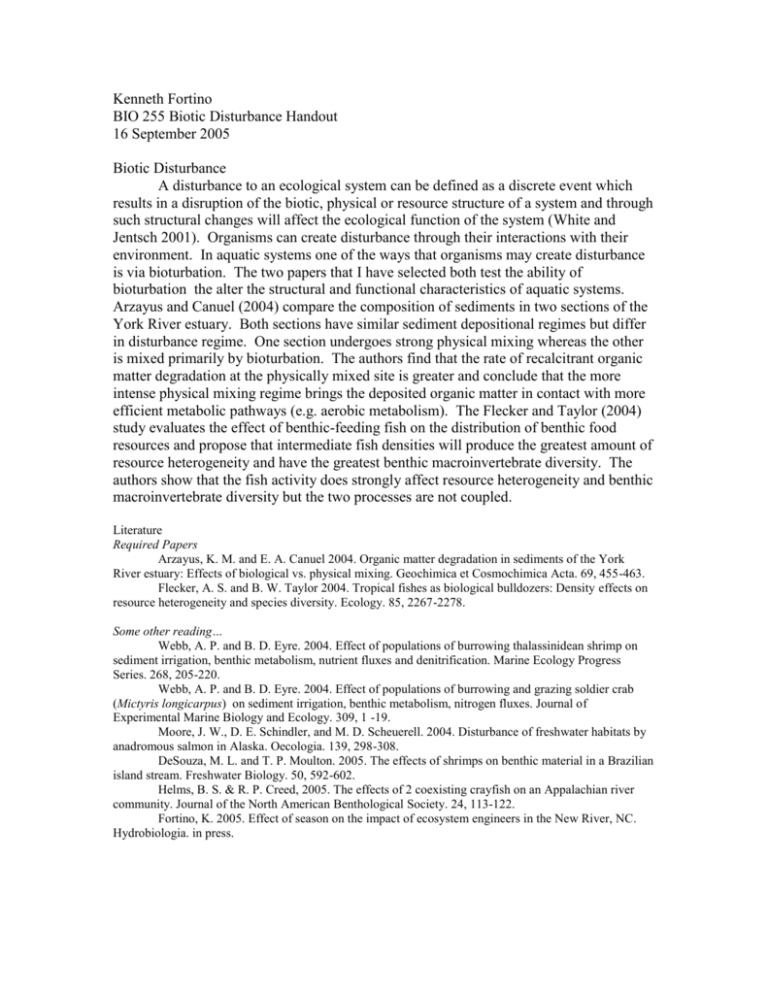
Kenneth Fortino BIO 255 Biotic Disturbance Handout 16 September 2005 Biotic Disturbance A disturbance to an ecological system can be defined as a discrete event which results in a disruption of the biotic, physical or resource structure of a system and through such structural changes will affect the ecological function of the system (White and Jentsch 2001). Organisms can create disturbance through their interactions with their environment. In aquatic systems one of the ways that organisms may create disturbance is via bioturbation. The two papers that I have selected both test the ability of bioturbation the alter the structural and functional characteristics of aquatic systems. Arzayus and Canuel (2004) compare the composition of sediments in two sections of the York River estuary. Both sections have similar sediment depositional regimes but differ in disturbance regime. One section undergoes strong physical mixing whereas the other is mixed primarily by bioturbation. The authors find that the rate of recalcitrant organic matter degradation at the physically mixed site is greater and conclude that the more intense physical mixing regime brings the deposited organic matter in contact with more efficient metabolic pathways (e.g. aerobic metabolism). The Flecker and Taylor (2004) study evaluates the effect of benthic-feeding fish on the distribution of benthic food resources and propose that intermediate fish densities will produce the greatest amount of resource heterogeneity and have the greatest benthic macroinvertebrate diversity. The authors show that the fish activity does strongly affect resource heterogeneity and benthic macroinvertebrate diversity but the two processes are not coupled. Literature Required Papers Arzayus, K. M. and E. A. Canuel 2004. Organic matter degradation in sediments of the York River estuary: Effects of biological vs. physical mixing. Geochimica et Cosmochimica Acta. 69, 455-463. Flecker, A. S. and B. W. Taylor 2004. Tropical fishes as biological bulldozers: Density effects on resource heterogeneity and species diversity. Ecology. 85, 2267-2278. Some other reading… Webb, A. P. and B. D. Eyre. 2004. Effect of populations of burrowing thalassinidean shrimp on sediment irrigation, benthic metabolism, nutrient fluxes and denitrification. Marine Ecology Progress Series. 268, 205-220. Webb, A. P. and B. D. Eyre. 2004. Effect of populations of burrowing and grazing soldier crab (Mictyris longicarpus) on sediment irrigation, benthic metabolism, nitrogen fluxes. Journal of Experimental Marine Biology and Ecology. 309, 1 -19. Moore, J. W., D. E. Schindler, and M. D. Scheuerell. 2004. Disturbance of freshwater habitats by anadromous salmon in Alaska. Oecologia. 139, 298-308. DeSouza, M. L. and T. P. Moulton. 2005. The effects of shrimps on benthic material in a Brazilian island stream. Freshwater Biology. 50, 592-602. Helms, B. S. & R. P. Creed, 2005. The effects of 2 coexisting crayfish on an Appalachian river community. Journal of the North American Benthological Society. 24, 113-122. Fortino, K. 2005. Effect of season on the impact of ecosystem engineers in the New River, NC. Hydrobiologia. in press.







